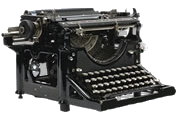When the U.S. Navy Got A Little Larger… (Current Literature, 1912)
This article heralds the construction of two American battleships that would later become famous for the rolls they played during the Second World War. Both ships, U.S.S. Oklahoma and U.S.S. Nevada, would be commissioned in 1916 and assigned to the Atlantic Fleet during the Great War; Oklahoma protected convoys and later, in 1919, escorted President Wilson to France to the Versailles Treaty.
When the U.S. Navy Got A Little Larger… (Current Literature, 1912) Read More »
